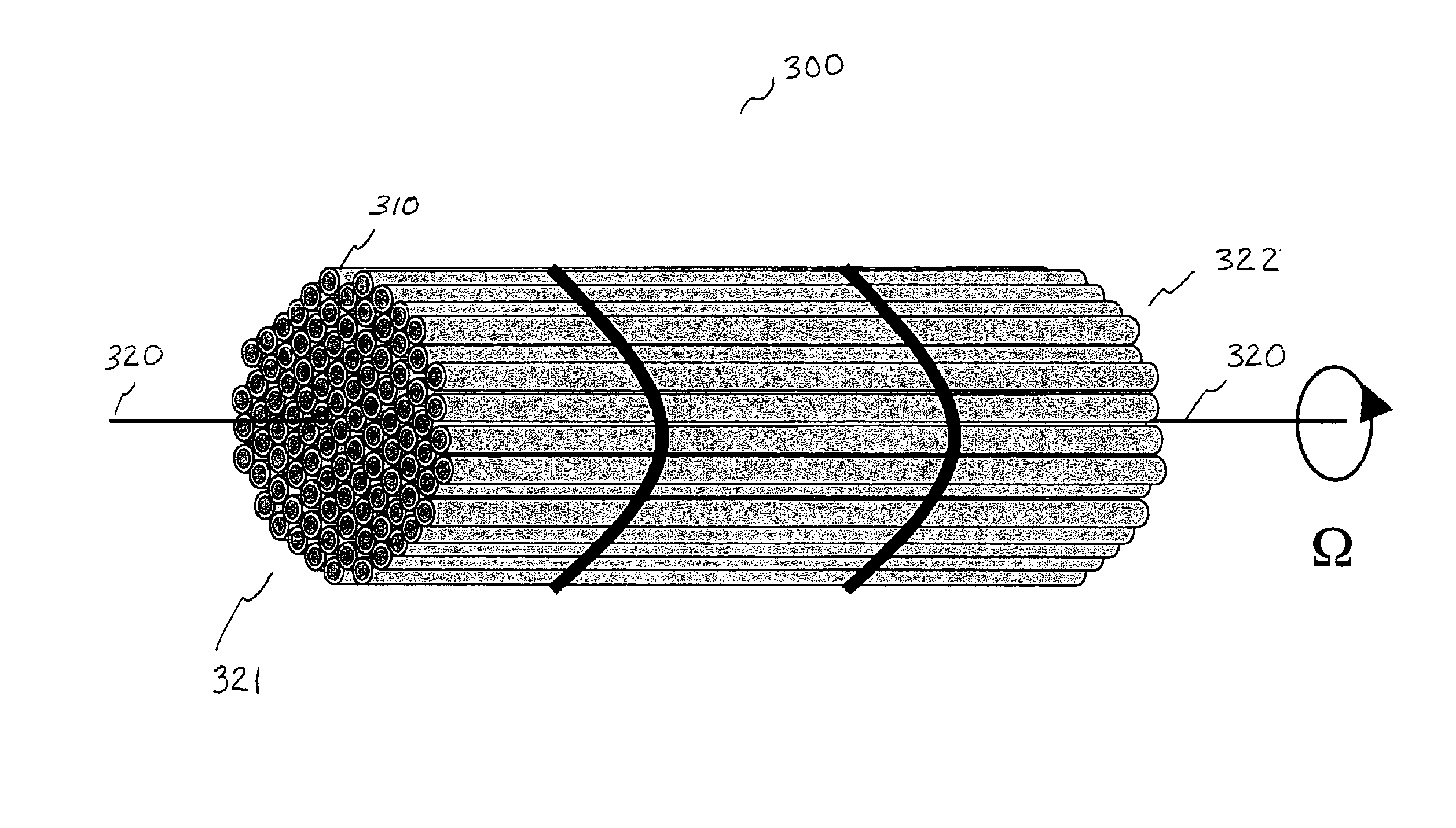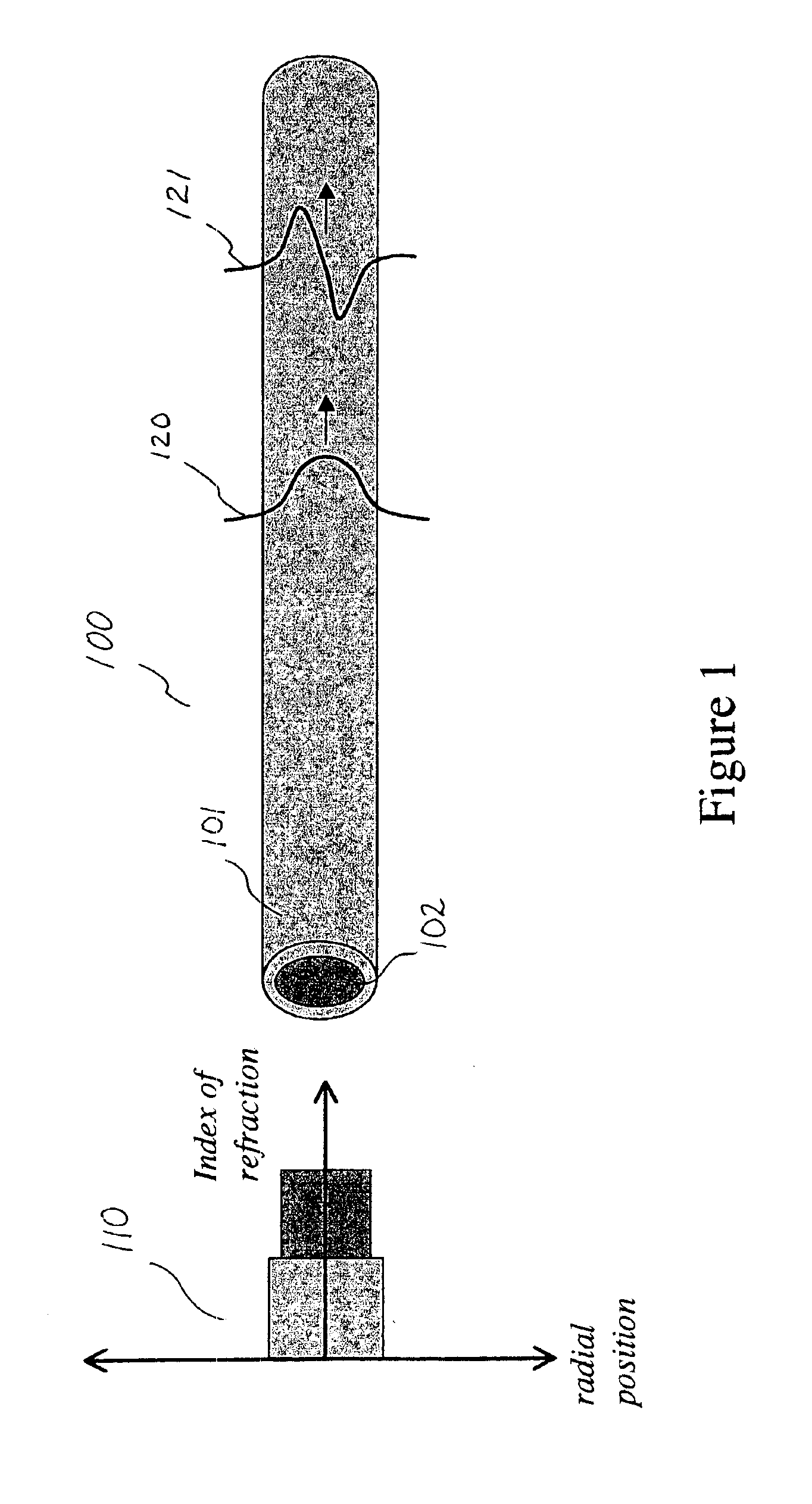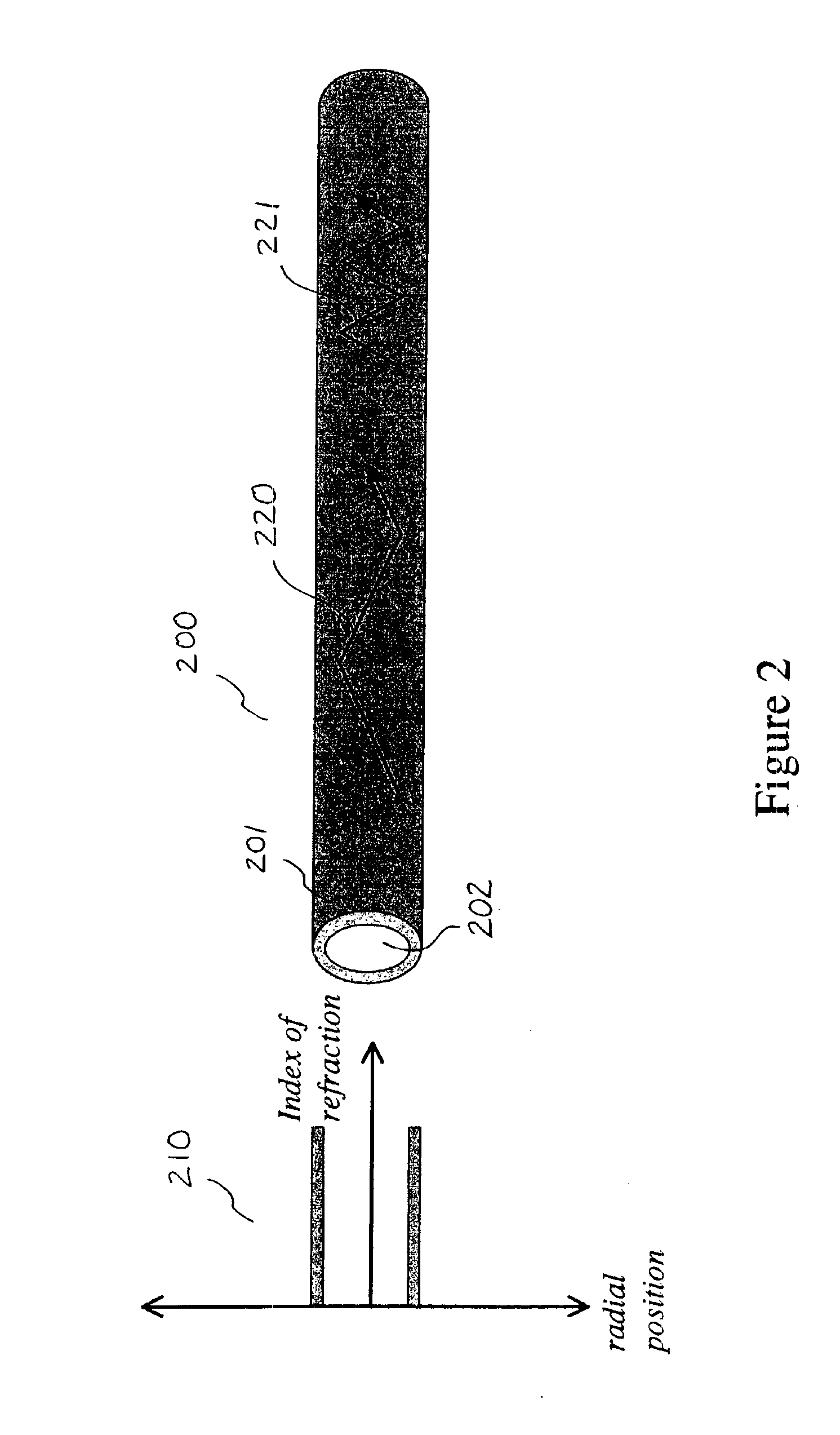Apparatus for beam homogenization and speckle reduction
a beam and beam technology, applied in the field of apparatus for beam homogenization and speckle reduction, can solve the problems of limiting the use of laser sources, affecting so as to and improve the quality of images.
- Summary
- Abstract
- Description
- Claims
- Application Information
AI Technical Summary
Benefits of technology
Problems solved by technology
Method used
Image
Examples
Embodiment Construction
[0015]The present invention combines the steps of temporal averaging and dynamic speckle pattern generation to accomplish spatial homogenization and speckle reduction. Our technique for division and re-combination uses an array or bundle 300 of light guides 310, as shown in FIG. 3. The array may be arranged so that the exit 322 and entrance 321 faces have different geometries to accomplish beam shaping (e.g., from rectangular to circular). To the imaging system, the illumination now seems to arise from a number (often several hundred) of partially-coherent, small circular apertures. Propagation through the light guide array homogenizes the beam and reduces the coherence of the laser light. A collection of fibers (either optical or capillary tube) is fused together, the number depending upon the desired aperture and core diameter. The whole assembly may be rotated along the axis of optical propagation 320 in either direction at some rotation rate Ω, or translated across the face perp...
PUM
 Login to View More
Login to View More Abstract
Description
Claims
Application Information
 Login to View More
Login to View More - R&D
- Intellectual Property
- Life Sciences
- Materials
- Tech Scout
- Unparalleled Data Quality
- Higher Quality Content
- 60% Fewer Hallucinations
Browse by: Latest US Patents, China's latest patents, Technical Efficacy Thesaurus, Application Domain, Technology Topic, Popular Technical Reports.
© 2025 PatSnap. All rights reserved.Legal|Privacy policy|Modern Slavery Act Transparency Statement|Sitemap|About US| Contact US: help@patsnap.com



